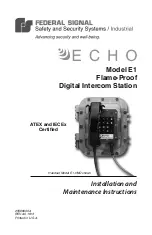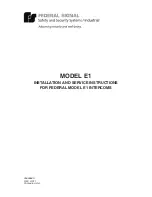
2-9
and begins counting down. When the 8254 counts down to 0, another
conversion is initiated and the process repeats.
Because the 8254 counter/timer uses a 1 MHz time base, each count
represents 1
µ
s. For example, if you load a count of 25, the time
interval between conversions is 25
µ
s; if you load a count of 65536,
the time interval between conversions is 65.536 ms.
The 8254 contains three counter/timers: C/T0, C/T1, and C/T2. If you
are using a hardware internal clock source, the time base logic uses
C/T1 and C/T2 in either normal or cascaded mode, as follows:
–
Normal Mode - A software-selectable count is loaded into C/T2
of the 8254 counter/timer circuitry. Each time C/T2 reaches
terminal count, a conversion is initiated. The time interval
between conversions ranges from 25
µ
s to 65.536 ms.
–
Cascaded Mode - A software-selectable count is divided between
C/T2 and C/T1 of the 8254 counter/timer circuitry. When C/T2
counts down to 0, C/T1 decrements by 1. C/T2 is reloaded with
its count value and begins counting down again. Each time C/T2
counts down to 0, C/T1 decrements by 1. Each time both C/T2
and C/T1 reach terminal count, a conversion is initiated. The time
interval between conversions ranges from 25
µ
s to 1.2 hours.
Note:
For compatibility with the DAS-8 board, on power-up or
system reset, the DAS-800 board connects the clock input of C/T2 to
the CPU bus clock divided by two. If you specify a hardware internal
clock source through software, the DAS-800 board connects the clock
inputs of C/T1 and C/T2 to the 1 MHz time base. The DAS-801 and
DAS-802 boards always connect the clock input of C/T2 to the
1 MHz time base.
Refer to page 2-17 for more information about the 8254
counter/timer circuitry.
●
Hardware (external clock source) - An external clock source is
useful if you want to sample at rates not available with the 8254
counter/timer circuitry, if you want to sample at uneven intervals, or if
you want to sample on the basis of an external event. An external
















































